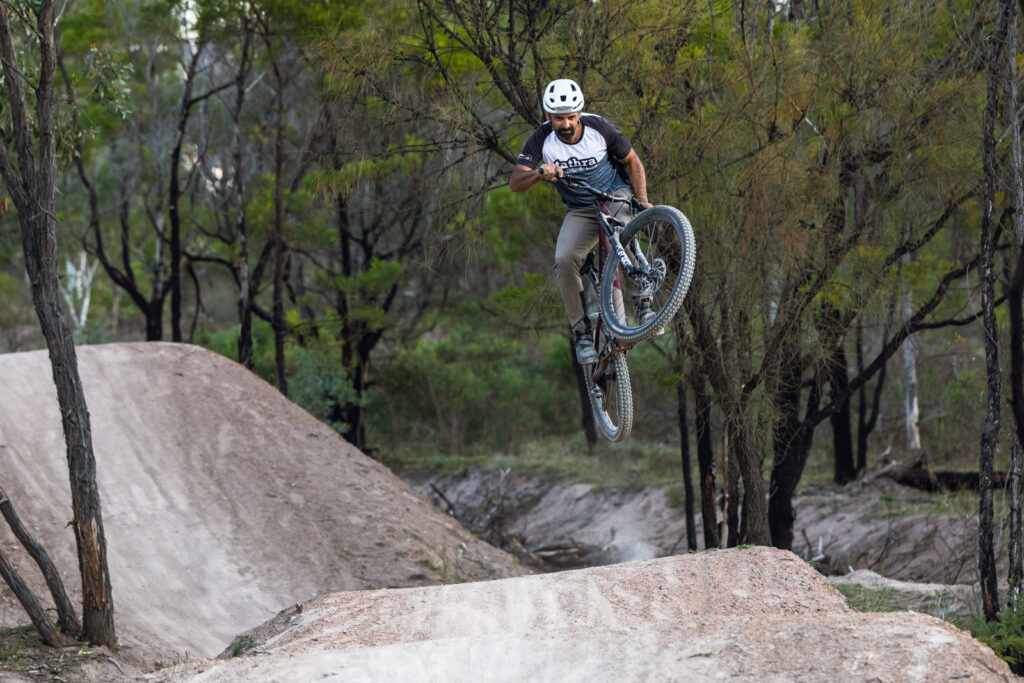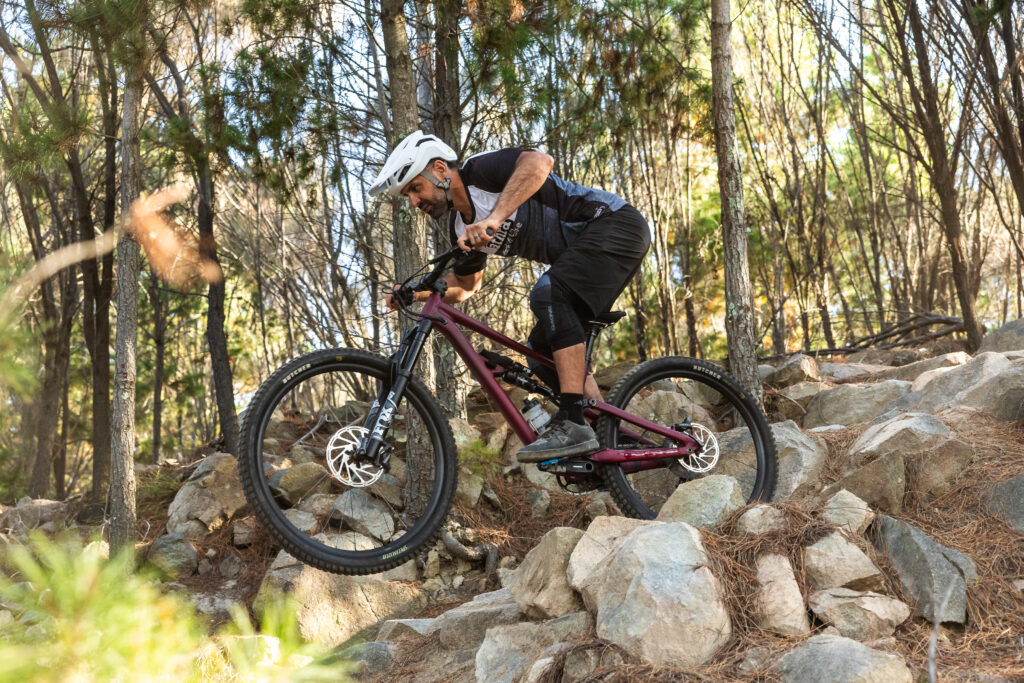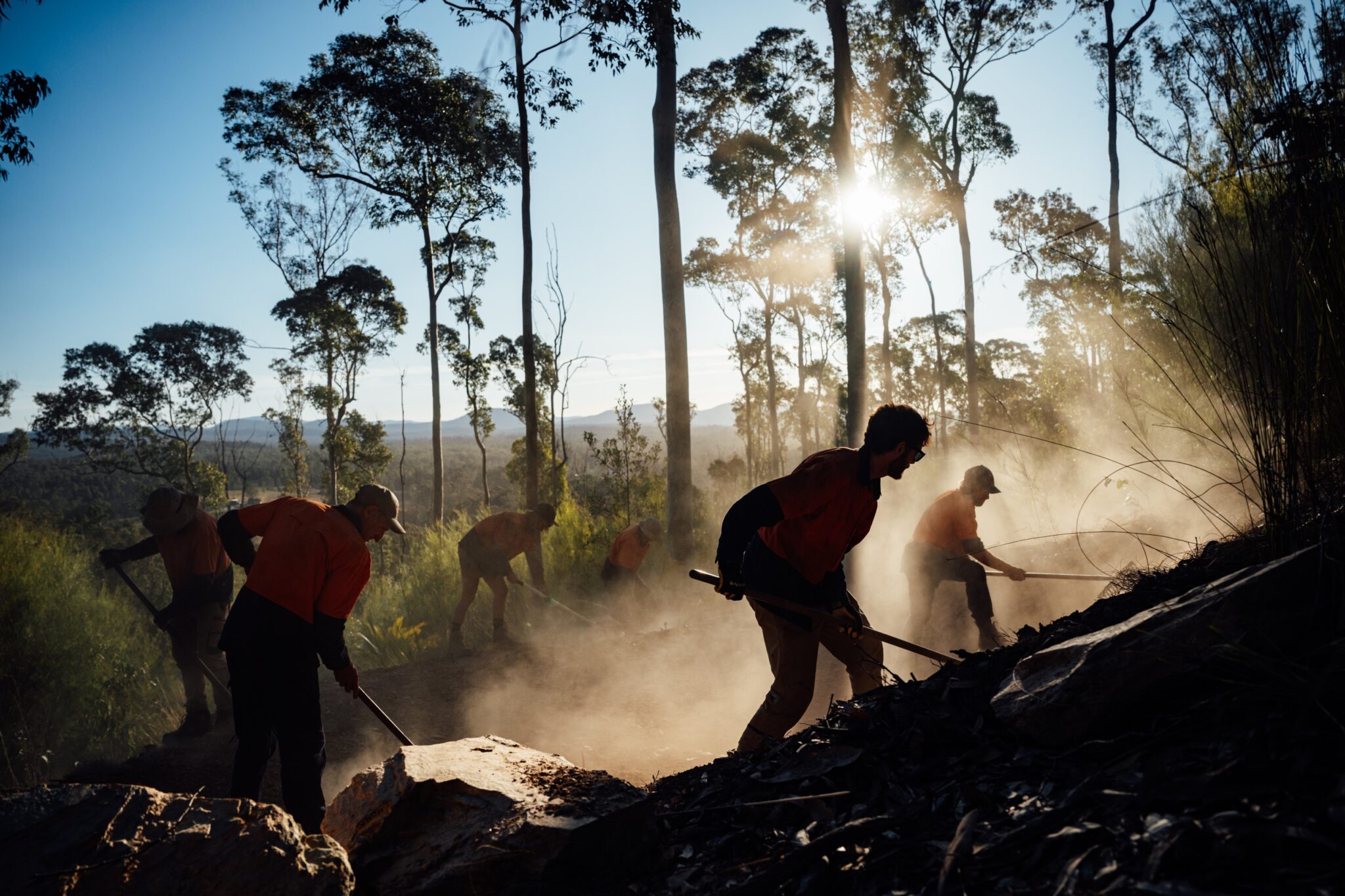As the mountain biking community grows, so does the demand for well-designed mountain bike trails that cater to riders of all skill levels. One of the often overlooked aspects of sustainable trail design is incorporating opportunities for riders to develop their skills within trail networks safely, with adequate challenge. This not only enhances the overall riding experience for a wider cross-section of riders but also fosters long-term engagement in the sport while promoting safety and building confidence among riders.
Enhancing Rider Development
Mountain biking requires diverse skills, from balance and bike handling to bike control in the air and navigating technical features. By designing mountain bike trails and trail networks with built-in skill progression, riders can steadily develop their skills at their own pace and in a safe and controlled environment.


Mountain bike trails and trail networks that provide entry-level features, such as smooth turns and gentle inclines, allow basic techniques to be learned. Gradually introducing more technical elements like rock gardens, jumps, and drops allows riders to grow their confidence and technique progressively.
This progression is essential for beginner riders. A well-designed trail network ensures that as their skills improve, new challenges always push their limits without overwhelming them. This keeps riders engaged and motivated to continue improving their abilities.
Encouraging Rider Retention and Engagement
Mountain biking is not just a sport but a lifestyle that draws people back to the trails repeatedly. When trail networks provide a clear path for progression, riders of all levels can find something that suits their current ability while giving them a goal to strive for. This engagement is critical for rider retention. Without trails that offer varying difficulty levels, riders may become bored or frustrated, either feeling that the trails are too easy or too advanced for their skill set.
Progression in a trail network gives riders an immediate sense of accomplishment when they master a new feature or ride a more challenging trail. This sense of achievement boosts rider satisfaction and encourages them to explore and develop new skills and techniques. Trail networks that cater to progression are likelier to see repeat visits and cultivate a loyal rider base.
Building Safer Mountain Bike Trails and Riding Environments
One key benefit of incorporating skills progression into mountain bike trail design is that it helps create a safer riding environment. When trails are laid out to guide riders through increasingly challenging features as they develop their skills, it reduces the likelihood of riders attempting trails beyond their ability. Riders can test their limits in a safer, controlled manner rather than risking injury by tackling technical features prematurely.
Catering to Diverse Rider Groups
Mountain biking attracts a wide range of participants, from families and children to hardcore riders and increasingly older riders who are entering mountain biking as an alternative to road riding or another sport. A well-designed trail network that offers progression ensures there is something for everyone.

Providing a diversity of mountain bike trails encourages new riders to take up the sport and allows families and groups of mixed abilities to ride together. This inclusivity strengthens the local mountain biking community and creates a welcoming environment for riders of all ages and skill levels.
Promoting Sustainability of Mountain Bike Trail Networks
Incorporating rider skills progression into trail networks also promotes sustainability. As riders improve and seek out more challenging mountain bike trails, well-designed networks reduce the need for illegal trail building or modifications to existing trails that can damage the environment. When riders know they can access increasingly challenging features within a designated trail network, they are less likely to create unofficial trails, leading to erosion, habitat destruction, safety hazards, and issues with land managers.
Additionally, progression-based trail networks encourage riders to return to the same location as they continue improving, ensuring a steady traffic flow through the trails. This can generate funds for maintenance and expansion, helping to ensure the longevity of the trail system. Well-maintained, sustainable trails with skills progression are also more likely to attract support from volunteers, land managers, sponsors, funding bodies, and the wider mountain biking community, creating a cycle of trail development and preservation.
In today’s growing mountain biking landscape, creating trail networks that cater to all abilities while offering opportunities for progression is a fundamental element of a thriving, sustainable riding community.
Happy Trails






